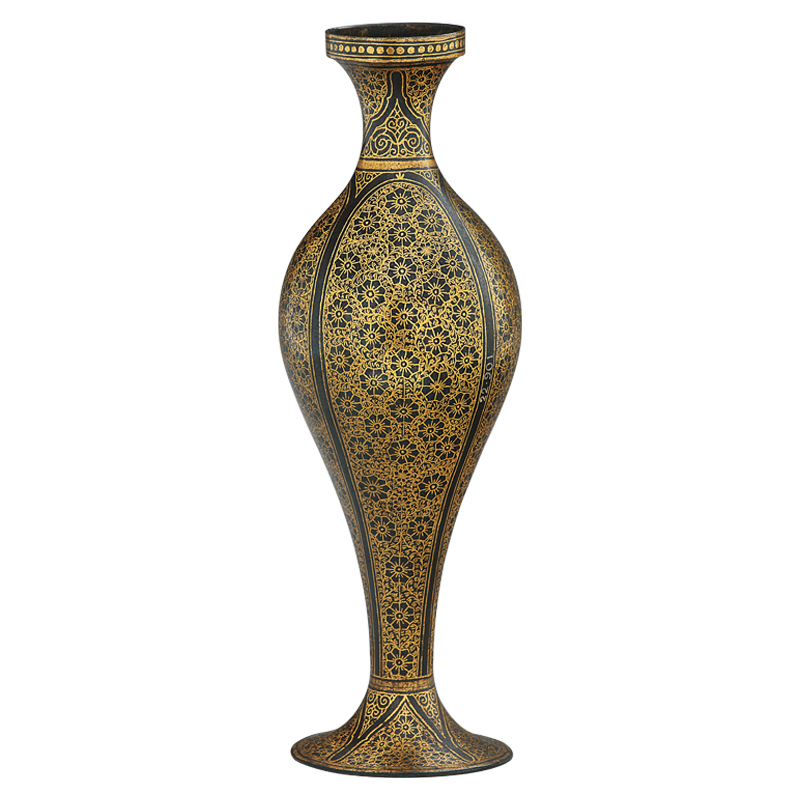Phuldan (Flower Vase)
Description
The ground of the tall, slender vase is richly ornamented with gold damascene work. The body of the vase is divided into four panels, each in the shape of a large petal. Each panel has eight-petalled flowers all over. Similar flowers decorate the neck and base. The term “damascening” is derived from the name of the ancient city of Damascus in Syria where it originated. It reached India during the Mughal period, probably through Iran and Afghanistan. Initially, this technique was used mainly to decorate hilts of daggers, swords, and shields. However, later it was also used to embellish articles of daily use like boxes, huqqa bases, vases, trays, etc. Metal objects, especially those of steel or iron, were embellished using the damascening technique. The art is practised in many countries though there are variations in the decoration from region to region. It is the art of decorating one metal with encrusted designs in another metal, usually gold or silver. A laborious technique is to cut grooves in the surface of the base metal, to receive thin gold leaf or wire which is hammered carefully into the incised pattern. In another technique, gold leaf or wire is inlaid or applied to a surface that has been prepared by crosshatching or chasing with a sharp tool. This work is a bit superficial compared to the former technique. It is therefore called koftgari or false damascening.
Collection
Indian Decorative Art
Object Type
Vase
Material
--
Schools/Culture/Period
--
Technique
Damascene work
Date
19th century CE
Location
--
Dimension
--
